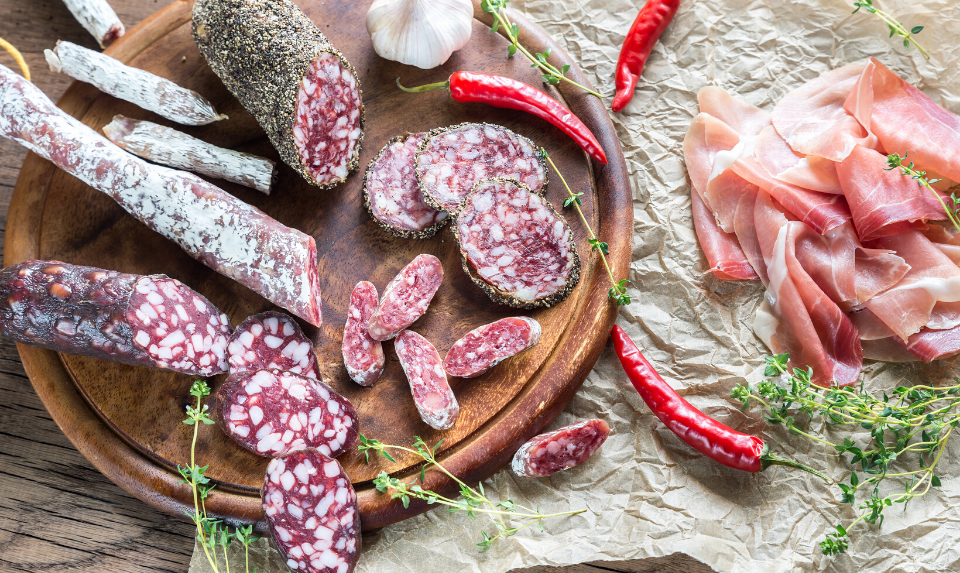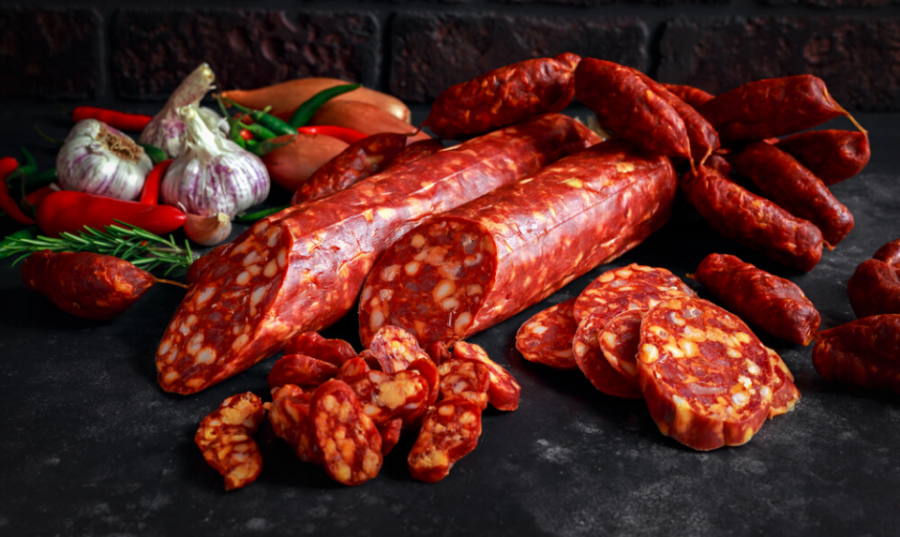A sausage that may be considered as dry or semi-dry that is cooked, smoked, or un-smoked, and is usually considered as ready-to-eat.
Dry sausages are cured meat products. They are a more concentrated variety of meat prepared from beef, pork, poultry, or a mixture of meats that are ground, seasoned with spices and mixed with curing ingredients, filled into a casing, and then moved using a controlled and constant air-drying procedure. The semi-dry sausage is not as hard in substance as the dry sausages and is somewhat dried as it is smoked to completely cook the product before being ready for use.
The types of dry sausages on hand are chorizo, Frizzes, pepperoni, Lola, Lolita, Lyons, and salami. Variations of semi-dry sausage are summer sausage or Cervelat, Mortadella, and Lebanon bologna.

Drying sausages at home can be very gratifying. Whether you manufacture your own beer, cheese, ice cream, sausages or other food at home, it actually is hard to beat. A sausage that’s made with your own vigilantly selected, natural ingredients will at all times tastes better a store-bought manufactured goods packed with unnecessary extras.
This article assumes you by now know how to make your own sausages and are at the drying stage. If you want to skip back to the start, look into our ultimate guide to creating sausages. This will assist you to get set up and assumes you have no familiarity on this topic.
The Bad News about Homemade Dry Sausages
Drying homemade sausage can also be a health risk if the drying procedure isn’t treated with value. Dangerous food poisoning bugs like Clostridium botulinum love the oxygen-free, warm sausage center.
This increases the danger of infecting your meat and, in some cases, causing death. It is supposed that up to five per cent of individuals who contract the disease will die.
Now the Good News
But wait! Before you slam this page and choose not to make your own dry sausages think about this: the risk can be handled by the simple addition of curing salts.
What is Curing Salts?
Curing salts are different from normal table salt. They have Sodium Nitrate (Insta cure #2) or Sodium Nitrite (often called pink salt). They keep away and kill the bacteria. These salts typically come in mixtures containing about 0.2% Sodium Nitrite. It is significant to use small amounts of this salt. In large amounts it can be unsafe to consume.
Which Curing Salt is Best?
Depending on how long you want on drying the meat, different salts will be further functional.
Given that Sodium Nitrate converts to Sodium Nitrite eventually, it is best for longer drying sessions of 6 weeks or more.
Sodium Nitrite is more practical for shorter drying projects.
How Much Salt Should I Use?
It is suggested that you put 2 tablespoons (30 grams) of curing salt per 2.2 pounds (1kg) of meat.
How to Carefully Dry Your Sausages
Prior to adding the curing salts, your meat must be set for the drying process.
- Begin by cutting the meat into chunks and removing excess fat (about 20% fat is a good amount).
- Be sure your meat is cold so it won’t clog the food processor then feed the meat through the grinder. If you see that the meat is getting stuck, you can apply cooking spray or silicon to make the process easier.
- Once the sausage is ground, you can start to add in the spices and seasonings. Regularly used ingredients are sea salt, paprika, crushed red pepper, fennel, and pepper. If you would like your sausage spicy, you can put in cayenne pepper to get some heat to your dish. You will need to put in the curing salts at this instant.
The Drying Process

All through the drying procedure, it is best that the temperature stays around 60F (15.5C) and moisture stays around 70%. Moisture below 60% can make the outer casing of the sausage to dry too fast and thwart the inside from drying. A good way to amplify the humidity in a room is to hang the sausage on top of a bowl of water or place a humidifier in the room.
The sausage is complete when it has lost at least 30% of its weight. There might be dry white mold on the casing. That’s not a problem – this is good mold and is not dangerous. Black and green mold is bad, however, and if seen, you’ll need to dispose of the sausages and start over. If there is just a little bit you can just remove it off with a cloth dipped in saltwater.
Making dry sausages at home is satisfying and you’ll end up with some high-quality sausages. But before you jump into making them, familiarise yourself with how to create them securely.
Following this guide will let you make delicious dry sausages, free of germs and mold. If you can acquire some help from an expert or friend who has the experience, that would also be a big help.
